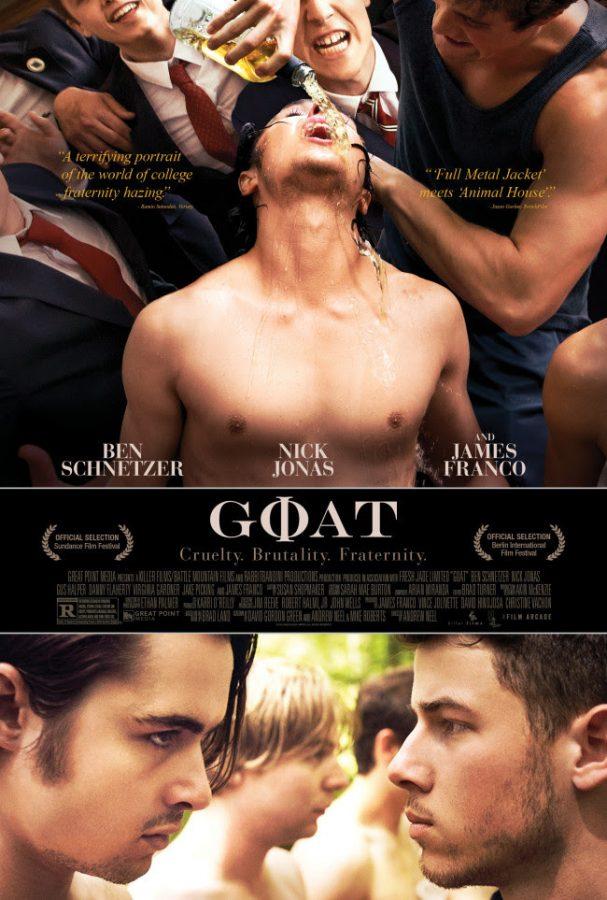“Goat” Illuminates Hazing But Fails to Account for Greater Issues
Director Andrew Neel’s “Goat” features two brothers and their experiences in a fraternity during “Hell Week”.
September 23, 2016
In the current collegiate landscape where fraternity culture is as widely criticized as it is practiced, director Andrew Neel’s “Goat” is a welcome addition to the discussion. The project is an anti-hazing film that excels with its shocking depictions of perverse, cruel hazing practices, yet struggles to develop a multi-dimensional indictment of toxic masculinity.
“Goat” centers on two brothers — actual, not fraternal — Brad (Ben Schnetzer) and Brett (Nick Jonas). At the start of the film, Brad is assaulted by a pair of strangers, then mocked by a detective for not defending himself. Feeling emasculated and weak, he decides to pledge for Brett’s fraternity, hoping that being accepted by a new group of “brothers” will prove his masculinity.
The majority of the film then takes place during “Hell Week,” as Brad and the other pledges endure sadistic, torturous rituals that give the “Saw” franchise a run for its money. It’s during these sequences that Neel shines, deploying equal parts stark realism and impressionistic visual flourishes that work well with the somber, droning score.
In one particularly impactful segment, James Franco makes an appearance as Mitch, a beloved fraternity alum now with a wife and child, who returns to the frat to join the current members for an evening of heavy drinking. What follows is an astounding scene wherein Mitch reverts to his animalistic qualities and repeatedly demands that Brad punch him in the face. It’s an effective rebuke to the oft-heard excuse that “boys will be boys. ” Mitch demonstrates that this wild, brutish behavior does not end come graduation and entrance into the adult world.
Still, “Goat” falters because it relegates the central relationship between Brad and Brett to the background in favor of its visually appalling hazing sequences. Brett becomes clearly sickened by the treatment of his brother, but then disappears for a good portion of the film. Their relationship is fleshed out at the beginning with remarkable performances by both Schnetzer and Jonas, and their eventual reunion is moving. The viewers can feel their mutually genuine love.
The most disappointing aspect of the film is that it fails to properly explore, or even address at all, other pervasive problems associated with toxic masculinity on college campuses. There is no mention whatsoever of the college sexual assault crisis, an issue that was covered last year in the documentary “The Hunting Ground.” There is also no recognition of the white privilege that is so often wrapped up in fraternity rituals. Even though every member of the fraternity in the film is white, it goes unacknowledged by the dialogue.
While it’s impossible to address every problem associated with Greek life, specifically fraternities, only focusing on hazing causes “Goat” to lose some of its capacity to change perspectives. A viewer could easily watch “Goat” knowing nothing about fraternity culture and come out of it with the singular message that hazing is the only problem in need of fixing.
Email Zach Martin at [email protected].

























































































































































